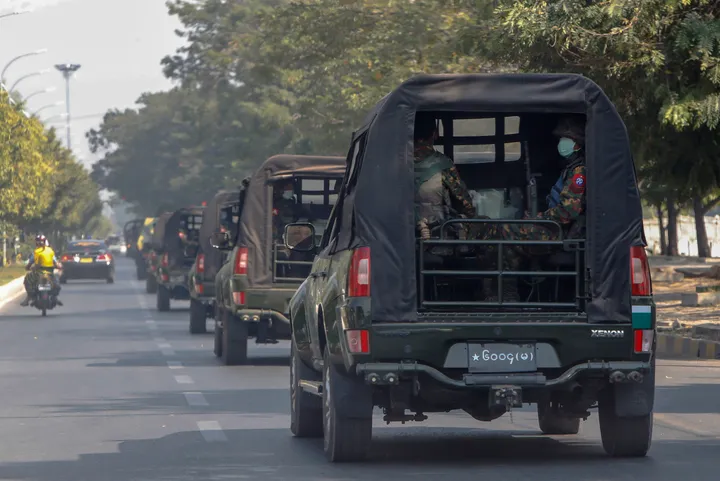The Intergovernmental Panel on Climate Change’s (IPCC) Working Group II, which is a UN-affiliated body, has released its most comprehensive report yet. “Impacts, Adaptation and Vulnerability” assesses the impacts of climate change on ecosystems and biodiversity as well as human societies.
The report focuses on the effects of climate change set against the consumption of natural resources, land and ecosystem degradation, rapid urbanisation, shifts in human demographics, social and economic inequalities, and the pandemic.
“The cumulative scientific evidence is unequivocal: Climate change is a threat to human wellbeing and planetary health. Any further delay in concerted anticipatory global action on adaptation and mitigation will miss a brief and rapidly closing window of opportunity to secure a liveable and sustainable future for all,” the scientists stressed.
The target limit of 1.5C above pre-industrial levels was set by the Paris Agreement, requiring individual governments to submit emission reduction targets.
However, global warming is expected to surpass 1.5C above pre-industrial levels by 2040, with emissions in line with the agreement’s current pledges.
The latest study is a stark reminder that the climate crisis is already here and has already impacted communities around the world significantly, particularly the exploited and climate-vulnerable countries in the Global South.
“This report is a dire warning about the consequences of inaction,” says Chair of the IPCC Hoesung Lee. “It shows that climate change is a grave and mounting threat to our wellbeing and a healthy planet. Our actions today will shape how people adapt and how nature responds to increasing climate risks.”
UN Secretary-General António Guterres has called the report an “atlas of human suffering,” and a “damning indictment of failed climate leadership.”
Here is a summary of the report’s findings.
READ MORE:The myth of ‘net zero’ targets and fossil fuel prosperity
Current conditions
Ecological changes
The scientists of the report state with confidence that the extent and magnitude of climate change impacts are much more substantial than estimated in previous assessments.
Human-induced climate change has already led to increasingly irreversible losses in terrestrial, freshwater, coastal and open ocean marine ecosystems worldwide.
These global environmental changes have reduced food and water security, with the largest impacts felt in Africa, Asia, Central and South America, Small Island Developing States, and the Arctic. The hardest hit communities have been indigenous peoples, small-scale food producers, low-income families, elderly people, and pregnant women.
Close to half of the world’s population currently experiences severe water scarcity during part of the year.
Health impacts
IPCC scientists observe increases in the following: Climate-related food-borne and water-borne diseases, vector-borne diseases, animal and human diseases emerging in new areas, diarrhoeal diseases as a result of increased rain and flooding, and mental health challenges caused by extreme weather events.
Increased air pollution has also contributed to health complications, with impacts concentrated amongst economically and socially marginalised urban residents.
Economic damages
The climate crisis has impacted agriculture, forestry, fishery and energy, particularly in regions throughout the Global South. It has also impacted tourism.
Vulnerability to climate change
Developmental constraints
A very important point that the report makes, which was stressed at the latest UN Climate Change Conference (COP26), is that regions and people with considerable development constraints are more vulnerable to the impacts of the crisis.
Higher levels of poverty, limited access to basic services and resources, climate-sensitive livelihoods, challenges in governance and violent conflict are all factors that contribute to increased vulnerability to the impacts of climate change.
The most vulnerable regions according to the report are: West, Central and East Africa, South Asia, Central and South America, Small Island Developing States and the Arctic.
READ MORE:The top ten most costly natural disasters in 2021
Near-term risks
At global warming levels of 1.5–2C, near-term warming and the increased frequency, severity and duration of extreme weather events are projected to lead to widespread, pervasive and potentially irreversible impacts on ecosystems and human societies, if exposure and vulnerability are high and adaptation ability is low.
Mid to long-term risks (2041–2100)
In terrestrial ecosystems, three to 14 percent of species assessed will likely face a very high risk of extinction at global warming levels of 1.5C, increasing up to three to 18 percent at a 2C increase, three to 29 percent at 3C, three to 39 percent at 4C and three to 48 percent at 5C.
In marine and coastal ecosystems, the risk of biodiversity loss ranges between moderate and very high with a 1.5–2C warming, and increases from high to very high by 3C.
At approximately 2C increases, snowmelt water availability for irrigation is projected to decline by up to 20 percent in some snowmelt dependent river basins, and global glacier mass loss of 18 ± 13 percent is expected to decrease water availability for agriculture, hydropower and human settlements. These changes are expected to double with a temperature increase of 4C.
Increases in frequency and severity of droughts, floods and heatwaves will increase food security risks in vulnerable regions from moderate to high in temperature rises of 1.5C to 2.
Current adaptation measures
Growing public and political awareness of climate impacts has resulted in at least 170 countries and numerous cities including adaptation within climate policies and planning processes.
However, gaps exist in the adaptation processes to the climate crisis between current levels of adaptation and the levels actually required to respond to impacts and reduce climate risks. Most observed adaptations are fragmented, small, sector-specific, designed to respond only to current or near-term risks. They are also more focused on planning rather than implementation. Adaptation in climate policies and planning processes are also unequally distributed across regions.
The report concludes by focusing on enabling conditions - a sort of call to action.
These include political commitment and follow-through, institutional frameworks, policies and instruments with clear goals and priorities, enhanced knowledge on impacts and solutions, monitoring and evaluation, mobilisation of and access to financial resources, and inclusive governance processes.
READ MORE: Climate change and global security: What’s at stake?
























